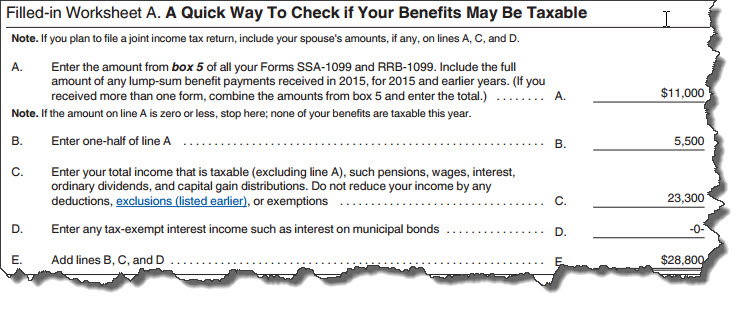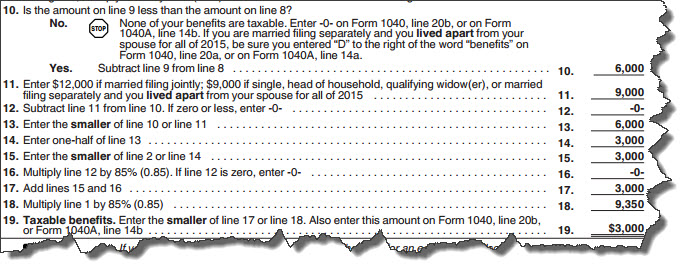They may be. The IRS’s rules for taxing Social Security benefits could require some studying on your part.
If you’ve received Social Security benefits for more than a year, you probably already know the answer to this question. But if you started receiving those government-issued checks or direct deposits in 2016, now’s the time to find out.
As you know, many IRS rules are absolutely cut-and-dried. But there are many others with exceptions, and this is one of them. Numerous factors are involved in determining whether your Social Security benefits are taxable.
Here’s some of what the IRS considers. (To get the whole picture and find out how these regulations apply to you, contact us.)
This worksheet displays the formula you can use to determine whether your Social Security Benefits may be taxable. It doesn’t tell the whole story, though. You may owe tax on only part of your payments.
By now, you should have received a Form SSA-1099, the Social Security Benefit Statement. Using the information reported there, you can use the IRS formula that helps determine whether your benefits may be taxable (it’s possible that they won’t be). The worksheet above illustrates this.
If it looks like your benefits are taxable, you’ll have to determine how much of your distributions are affected. The IRS looks at the combination of your Social Security benefits and your other income. The higher that number is, the more likely it is that you’ll have to pay taxes on a larger percentage of your benefits.
Complex Calculations
In most cases, the maximum taxable portion of your Social Security benefit distributions is 50 percent. You could, though, be taxed on up to 85 percent in one of two scenarios:
- You add one half of your benefits to the total of all your other income and come up with more than $34,000 ($44,000 if married filing jointly).
- Your return will report that your status will be married filing separately and you lived with your spouse for any length of time during the year.
Now comes the tricky part: calculating exactly what percentage of your Social Security benefits is taxable. Your 1040 or 1040A instructions should contain a very complex worksheet that can help you. But this, like any other element of your income tax return, must be absolutely correct, or you’ll be receiving post-filing correspondence from the IRS.
It’s no small task to do the calculations and reporting required to find out what—if any—percentage of your Social Security benefits are taxable.
There are many exceptions to the rules and formulas we’ve discussed here. And you must fully understand them to come up with the right answer. This will involve poring over IRS instructions that may be difficult for you to decipher.
Start Now
If you know that you’ll start receiving Social Security benefits in 2017, it would be a good idea to start thinking soon about how this will affect your overall income tax obligation. We always advise year-round tax planning. Such an approach not only helps you avoid unpleasant surprises at filing time – it may also help you take action before the end of the year to minimize what you owe. We’d be happy to meet with you and get you started on better, smarter preparation for taxes.


